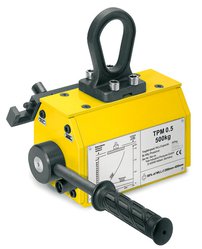Products
- Lifting & Hoisting Equipment
- Spreader Beam & Wire Rope Slings
- General Lifting Equipment
- Height Safety & Man Riding
-
Material Handling
-
 Fork Attachments
Fork Attachments
-
 Plate Clamps
Plate Clamps
-
 Load Moving Skates
Load Moving Skates
-
 Mobile Gantries
Mobile Gantries
-
 Scaffold Runway Beam
Scaffold Runway Beam
-
 Crane Forks & Floor Cranes
Crane Forks & Floor Cranes
-
 Genie Lifts
Genie Lifts
-
 Lifting Magnets
Lifting Magnets
-
 Wire Rope Pulling Machines
Wire Rope Pulling Machines
-
 Hydraulic Tables
Hydraulic Tables
-
 Pallet Trucks
Pallet Trucks
-
 Trolleys, Barrows & Baskets
Trolleys, Barrows & Baskets
-
 Container Lifting Lugs
Container Lifting Lugs
-
 Vacuum Lifting Equipment
Vacuum Lifting Equipment
-
 Block Grabs
Block Grabs
-
 Manhole Ring Clamps
Manhole Ring Clamps
-
 Roller Pinch Bar
Roller Pinch Bar
-
- Hydraulic Equipment
- Site Equipment / Miscellaneous
-
Crosby
-
 Crosby Shackles
Crosby Shackles
-
 Crosby Hooks & Accessories
Crosby Hooks & Accessories
-
 Crosby Rigging Accessories
Crosby Rigging Accessories
-
 Crosby Chain & Accessories
Crosby Chain & Accessories
-
 Crosby Lifting Clamps
Crosby Lifting Clamps
-
 Crosby Vertical Transport of Plates
Crosby Vertical Transport of Plates
-
 Crosby Horizontal Transport of Plates
Crosby Horizontal Transport of Plates
-
 Crosby Horizontal Transport of Sagging Plates
Crosby Horizontal Transport of Sagging Plates
-
 Crosby Horizontal Transport of Bundles of Non-Sagging Plates
Crosby Horizontal Transport of Bundles of Non-Sagging Plates
-
 Crosby Horizontal Transport of I-Beams
Crosby Horizontal Transport of I-Beams
-
 Crosby Horizontal Transport of H-Beams
Crosby Horizontal Transport of H-Beams
-
 Crosby Horizontal Transport of I and H-Beams
Crosby Horizontal Transport of I and H-Beams
-
 Crosby Vertical Transport of Drums
Crosby Vertical Transport of Drums
-
 Crosby Shipbuilding Applications
Crosby Shipbuilding Applications
-
 Crosby Vertical Transport of Pipe Sections
Crosby Vertical Transport of Pipe Sections
-
-
 Crosby Kuplex & Trawlex
Crosby Kuplex & Trawlex
-
 Crosby Eliminator Fittings
Crosby Eliminator Fittings
-
GET IN TOUCH OR SPEAK TO OUR SALES & HIRE TEAM ON 01642 915 330
TPM Lifting Magnet

TPM permanent lifting magnets are ideal tools for easy, quick and economical transport of heavy objects made from Ferro-magnetic material. Typical operating areas are workshops and warehouses, loading and unloading of machines as well as construction of jigs and fixtures.
Factors that reduce the magnetic clamp force:
Air Gap: High magnetic forces created by TPM allow the magnet to clamp components through the air gap; however, air gaps will reduce the magnetic performance as they provide a barrier between the contact surfaces. Air gaps occur in a number of different ways such as paint, dust and heavy mill scale. Poorly machined surfaces also constitute an air gap. Please down rate the magnet capacity in accordance with the adhesive force/air gap diagram which can be found in the spec sheet download below.
Material Thickness: If the TPM is used to lift plates thinner than the recommended minimum thickness, the clamping forces will be significantly reduced.
Contact Area: Full lifting capacity can only be achieved when the magnet has full contact area with the component being lifted. If the contact surface has holes in or is uneven then the performance will be affected accordingly. Always carry out a trial lift in these circumstances to establish correct lifting before transporting the load.
Material Type: certain materials have different abilities to carry magnetism. For materials other than mild steel a reduction factor must be applied in order to calculate the effective clamping force.
Typical Values:
Ferrous alloy steels - 0.8
High carbon steels - 0.7
Cast iron - 0.55
Examples of reduced SWL:
Mild steel - 500g
Cast iron - 500kg x 0.55 = 275kg
Maximum lifting capacity is achieved by using mild steels with the noted minimum thickness.



